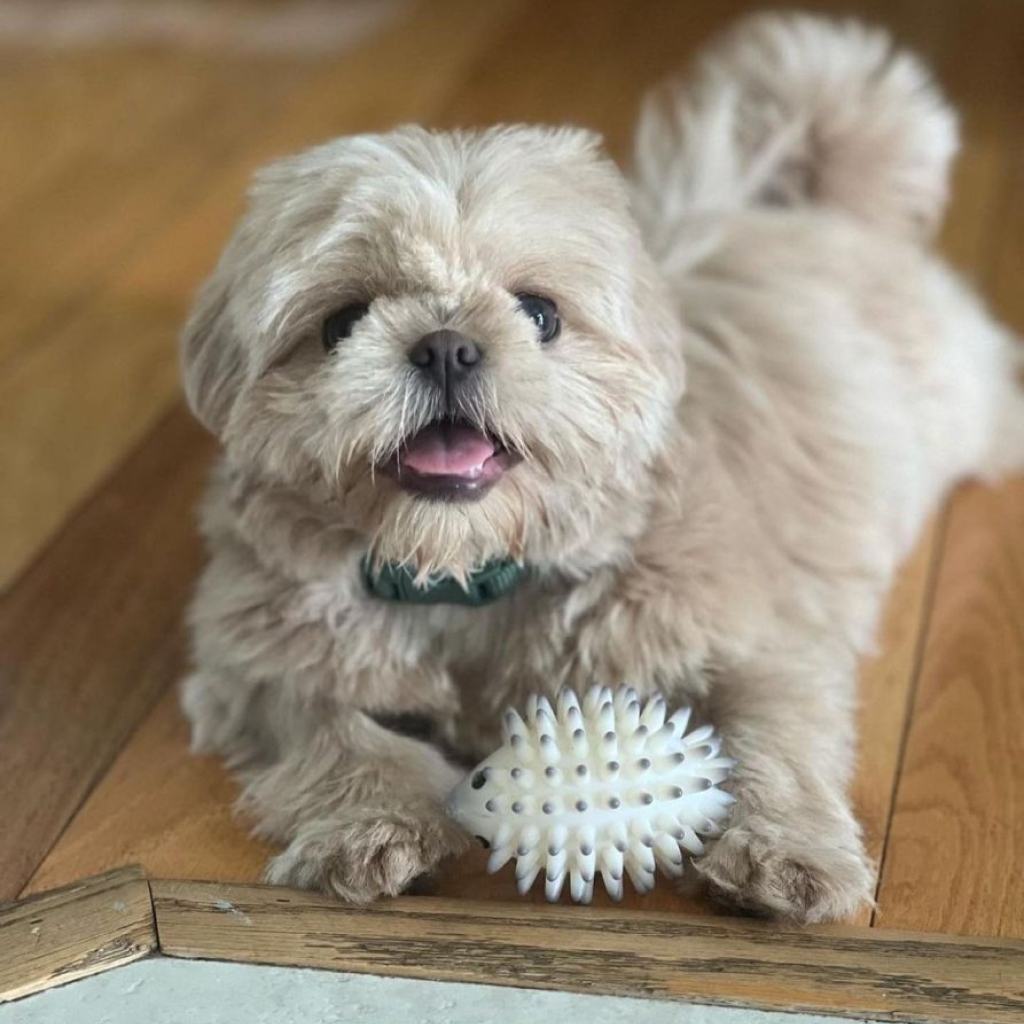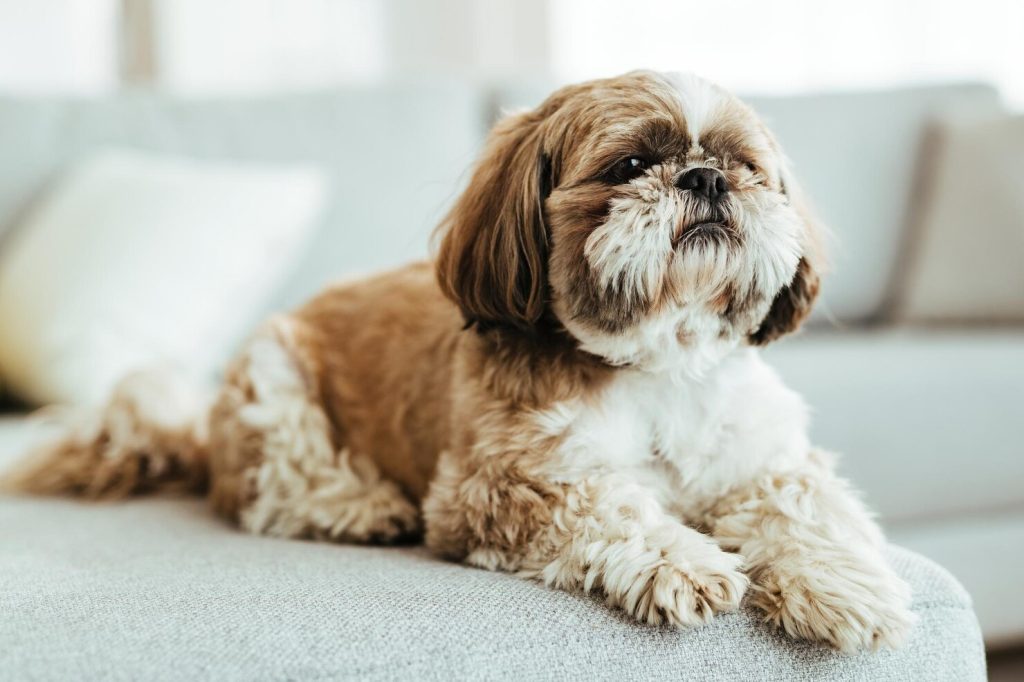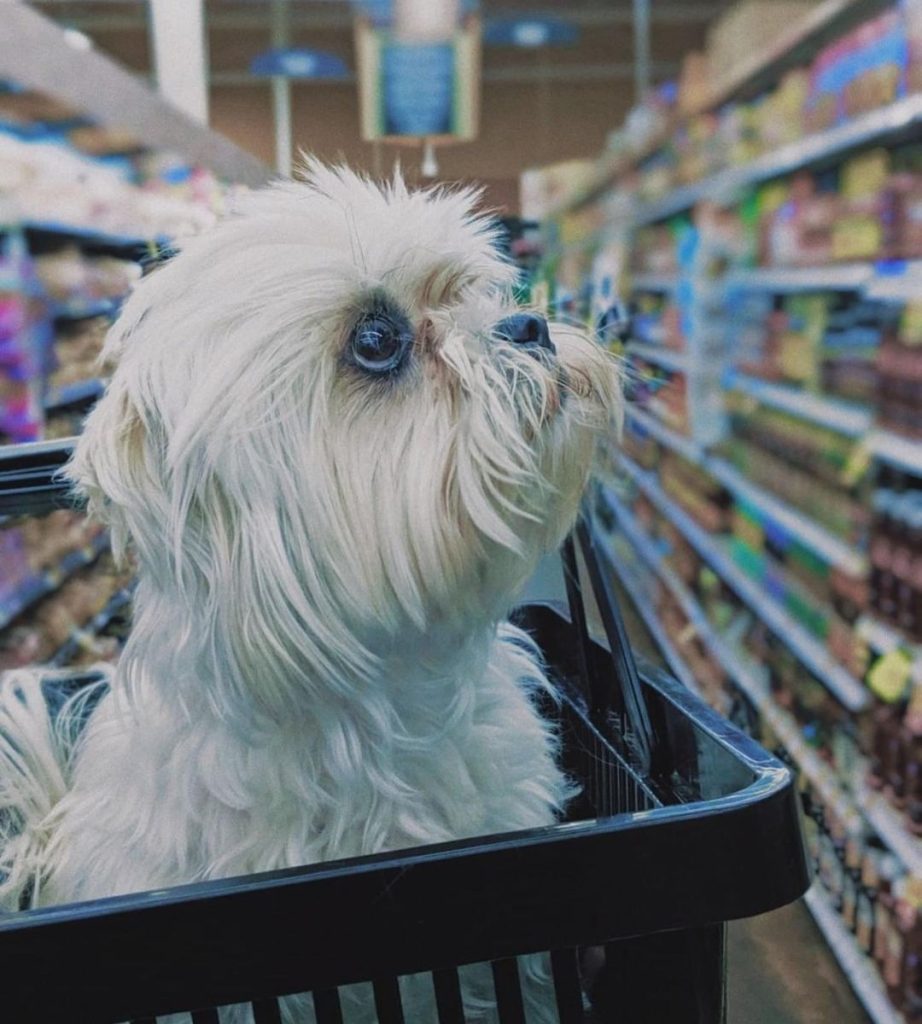Training a Shih Tzu puppy is a journey filled with joy, challenges, and unique experiences. Shih Tzus, with their distinctive personalities and striking features, are a popular breed known for their affectionate and friendly demeanor. This comprehensive guide aims to assist you in understanding and effectively training your Shih Tzu puppy, paving the way for a harmonious and loving relationship.

Shih Tzus, originating from China, have a long history as companion dogs. This background informs their behavior and training needs. They thrive on human companionship and respond well to consistent, positive reinforcement-based training methods. Understanding these breed-specific characteristics is essential for effective training and building a strong bond with your puppy.
Training a Shih Tzu puppy is not just about teaching them commands but also about understanding their temperament and catering to their emotional and physical needs. This guide will walk you through the various stages of your Shih Tzu’s development, offering insights and practical advice for each milestone. From early socialization to advanced training techniques, you’ll learn how to nurture a well-behaved, happy, and healthy Shih Tzu.
Early Development: Key Milestones for Shih Tzu Puppies
Weeks 3-12: Socialization and Puppy Proofing
The early weeks (3-12) in a Shih Tzu puppy’s life are critical for their overall development. This period is known as the socialization phase, where puppies learn to interact with their environment, humans, and other animals. Proper socialization during this stage lays the foundation for a well-adjusted adult dog. It’s vital to expose your Shih Tzu puppy to a variety of stimuli, including different sounds, sights, and textures, in a safe and controlled manner. This exposure helps in reducing fears and anxieties later in life.
Puppy proofing your home is another essential task during this period. Shih Tzu puppies are curious and may get into things they shouldn’t. Securing hazardous items, removing choking hazards, and creating a safe play area are all part of puppy proofing. It’s also the time to start establishing routine and boundaries, teaching your puppy where they can and cannot go in your home.
Weeks 3-5 Months: Housetraining, Grooming, and Puppy Classes
As your Shih Tzu puppy grows, the focus shifts to housetraining, grooming habits, and attending puppy classes. Housetraining a Shih Tzu can be challenging due to their small bladder. Consistency, patience, and frequent bathroom breaks are key. Establish a routine and stick to it, and use positive reinforcement to reward successful bathroom trips.
Grooming is an integral part of a Shih Tzu’s life due to their long, flowing coat. Early grooming introduces your puppy to the sensations of brushing, bathing, and nail trimming, making it a normal part of their routine. This early introduction helps prevent grooming-related anxiety in the future.
Puppy classes are highly beneficial for socializing with other dogs and basic obedience training. These classes offer a structured environment for your puppy to interact with other dogs and learn essentials. They also provide a platform for you to learn training techniques and understand canine behavior better.

Months 6-8: Food Transition and Walking on a Leash
During months 6 to 8, your Shih Tzu puppy will undergo significant changes, including transitioning from puppy food to adult dog food. This change should be gradual to prevent digestive issues. It’s also an ideal time to establish good eating habits and routines.
Leash training becomes crucial during these months. Shih Tzus may exhibit a strong streak of independence, which can make leash training a bit challenging. Teaching them to walk calmly beside you, without pulling, requires patience and consistency. Introduce the leash and harness in a positive way and start with short walks, gradually increasing the duration as your puppy becomes more comfortable.
Months 8-9: Adult Teeth Development and Adolescence
Between 8 to 9 months, your Shih Tzu will develop adult teeth. This phase often involves teething, which can lead to increased chewing behavior. Providing appropriate for bite toys and monitoring your pup to ensure they are not chewing on harmful objects is essential.
Adolescence in Shih Tzus can be marked by a surge in independence and sometimes stubbornness. It’s crucial to maintain a consistent training routine and set clear boundaries during this stage. Continued training and socialization are important to reinforce good behaviors and manage any emerging behavioral issues.
Understanding Shih Tzu Puppies
1. Breed-Specific Traits and Training Implications
Shih Tzus are known for their affectionate nature, intelligence, and sometimes, their stubbornness. These traits have implications for training. They respond best to positive reinforcement methods such as treats, praises, and playtime. Harsh training methods or negative reinforcement can lead to fearfulness and stubbornness in Shih Tzus.
Understanding the breed’s history can also be insightful. Bred as companion dogs for Chinese royalty, Shih Tzus enjoy being around people and are often eager to please. However, their royal background can sometimes mean they have a regal, independent streak. Training should be a mix of firmness, consistency, and lots of love and praise.
2. The Importance of Age in Training
The age of your Shih Tzu significantly influences their training. Puppies have shorter attention spans but are more adaptable and open to learning new things. Adult Shih Tzus might require more patience to unlearn established actions if they haven’t been trained properly as puppies. It’s crucial to adjust your training approach according to their life stage. Young puppies benefit from short, frequent training sessions, while older dogs might need more repetition and patience to learn new behaviors.
Structured Training Program: Weekly Breakdown
Week 1 – Introduction to Training
The first week of training your Shih Tzu puppy involves introducing them to basic concepts of training. This includes simple commands like ‘sit’, ‘stay’, and ‘come’. Training sessions should be short, no more than 5-10 minutes, to keep your puppy’s attention. Positive reinforcement through treats and praises is essential to encourage good behavior.
During this initial week, it’s also important to start establishing a routine, including feeding, bathroom breaks, and playtime. Consistency in these routines helps your puppy feel secure and aids in faster learning.
Week 2 – Basic Commands

Continuing from Week 1, Week 2 focuses on reinforcing basic commands and gradually introducing new ones such as ‘lie down’ and ‘leave it’. It’s crucial to practice these commands in different environments to ensure your puppy understands and follows them regardless of distractions.
In addition to commands, this week should also include continued socializing with other dogs. Introduce your puppy to different people and animals in a controlled and safe manner. This helps in building their confidence and reducing fear-based actions. Here is the short list of your steps:
- Reinforce commands like ‘sit,’ ‘stay,’ and ‘come.’
- Introduce new commands: ‘lie down’ and ‘leave it.’
- Practice in various environments for better command recall.
- Continue socialization with different people and animals.
Week 3 – Continued Commands and Socialization
Week 3 emphasizes the reinforcement of learned commands and the continuation of socialization activities. By now, your Shih Tzu puppy should be getting more comfortable with basic commands. This week can also include introducing more challenging environments for practicing commands, such as parks or busy streets, to test their focus and obedience.
Socialization should include exposure to various sounds, people, and experiences. The more diverse the experiences, the better adapted your puppy will be. Always ensure these experiences are positive and not overwhelming for your puppy.
Week 4 – Advanced Commands and Grooming
In Week 4, the focus shifts to introducing more advanced commands like ‘heel’ and ‘fetch’. These commands are not only functional but also provide mental stimulation for your Shih Tzu puppy. Remember to keep training sessions fun and rewarding.
Grooming should be an integral part of the training process. Regular grooming sessions help your puppy get used to being handled and groomed, which is essential for Shih Tzus given their long coat. Make grooming a positive experience filled with treats and gentle handling.Here is the short list of what you need to do:
- Introduce advanced commands: ‘heel’ and ‘fetch.’
- Focus on mental stimulation through training.
- Establish a regular grooming routine.
- Use grooming sessions for bonding and handling practice.
Week 5 – Public Outings and Behavioral Adjustment
Week 5 involves taking your puppy out for public outings. This is an important step in socialization and helps your puppy get used to different environments, sounds, and sights. Public outings are also an opportunity to practice obedience in more distracting settings.
Behavioral adjustment is also a focus this week. Pay attention to how your puppy reacts to different situations and work on correcting any unwanted actions, such as jumping on people or excessive barking. Consistent correction and reinforcement are key.
Week 6 – Reinforcement of Learned Skills
Week 6 is about reinforcing the skills learned in the previous weeks. This involves revisiting all commands and actions and practicing them in different settings. Consistency in training and reinforcement is critical to ensure your puppy remembers and adheres to the training.
This week is also a good time to start lengthening the duration of commands like ‘stay’ and ‘sit’. Increasing the complexity of training in a gradual manner helps keep your Shih Tzu engaged and challenged.
Week 7 – Addressing Behavioral Problems

Basic steps for Addressing Behavioral Problems are:
- Identify and address emerging behavioral issues.
- Focus on common problems like chewing and barking.
- Implement positive reinforcement for desired actions.
- Redirect inappropriate behaviors to appropriate actions.
Week 7 is dedicated to identifying and addressing any emerging behavioral problems. This could include issues like chewing inappropriate items, excessive barking, or not responding to commands. It’s important to understand the root cause of these behaviors to address them effectively.
Use positive reinforcement to correct unwanted actions. For example, if your puppy is bite on furniture, redirect them to a chew toy and praise them when they bite on the toy instead. Consistency and patience are vital in correcting behavioral issues.
Week 8 – Finalizing Basic Training
In the final week of basic training, it’s time to consolidate all the skills your Shih Tzu puppy has learned. This week should focus on practicing all commands in various situations to ensure reliability and consistency. It’s also a good opportunity to revisit any areas where your puppy may still be struggling and provide additional training and support. This week marks the transition from basic training to more advanced concepts and sets the stage for future learning and development.
Future Steps and Advanced Training
- Explore advanced training options like agility or trick training.
- Consider specialized classes for further skill development.
- Keep training sessions engaging and challenging.
- Continue lifelong learning and mental stimulation.
Next Steps After Basic Training
After mastering the basics, your Shih Tzu is ready to embark on advanced training. This can include more complex commands, agility training, or even specific tasks like therapy or assistance work. Advanced training not only challenges your dog mentally but also strengthens the bond between you and your pet. It’s important to continue training throughout your dog’s life to keep their skills sharp and provide mental stimulation.
Consider enrolling in specialized classes or working with a professional trainer to explore areas such as advanced obedience, trick training, or agility. These activities not only provide physical exercise but also offer mental stimulation, which is crucial for a breed as intelligent and energetic as the Shih Tzu.

Conclusion and Additional Resources
Training a Shih Tzu puppy is a rewarding journey that enhances the bond between you and your pet. It requires patience, consistency, and an understanding of the unique characteristics of the breed. Remember, every puppy is different, and what works for one may not work for another. Stay flexible in your approach and be prepared to adapt your training methods to suit your puppy’s individual personality and needs.
For additional information and support, consider joining Shih Tzu breed clubs or online communities where you can connect with other Shih Tzu owners. Books, online articles, and videos on dog training can also be valuable resources. Additionally, don’t hesitate to seek professional help if you encounter any challenges in your training journey. A qualified dog trainer or behaviorist can offer personalized advice and guidance to help you and your Shih Tzu succeed.
In conclusion, the key to successful Shih Tzu training lies in understanding and respecting their unique nature, being consistent in your training approach, and most importantly, enjoying the process of learning and growing together with your furry companion.
